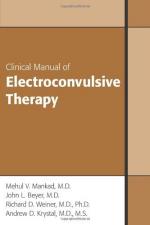|
This section contains 1,564 words (approx. 6 pages at 300 words per page) |

|
Overview
Electroshock was one of a number of "antagonist therapies" introduced in the early part of the twentieth century. Based on a belief that epilepsy and schizophrenic disorders had opposite effects on human brain anatomy, a number of physicians tried to relieve the symptoms of serious mental illness by inducing convulsions, first by chemical means and then by passing a current through the brain. Electroshock was opposed by the advocates of "talk" psychotherapy, and was largely supplanted by new tranquilizing drugs after 1950. In its modern form, drugs are used to eliminate the actual convulsion, and memory loss is minimal, so that it has become more acceptable for patients who do not respond to other treatments. The mechanism by which electroshock acts on the brain is still poorly understood.
Background
The humane treatment of the mentally ill made great strides in the nineteenth...
|
This section contains 1,564 words (approx. 6 pages at 300 words per page) |

|


